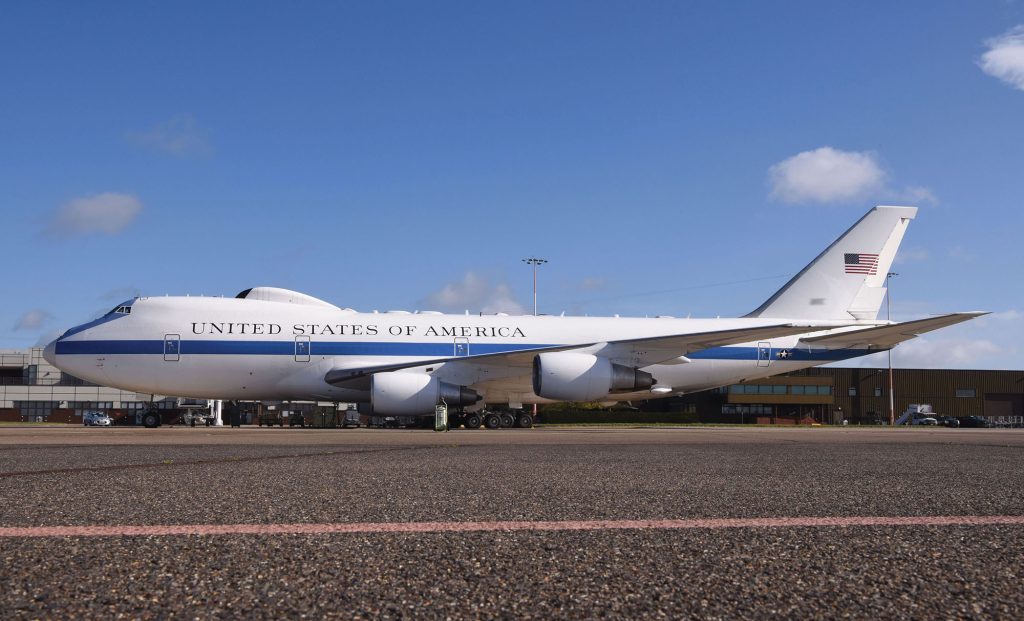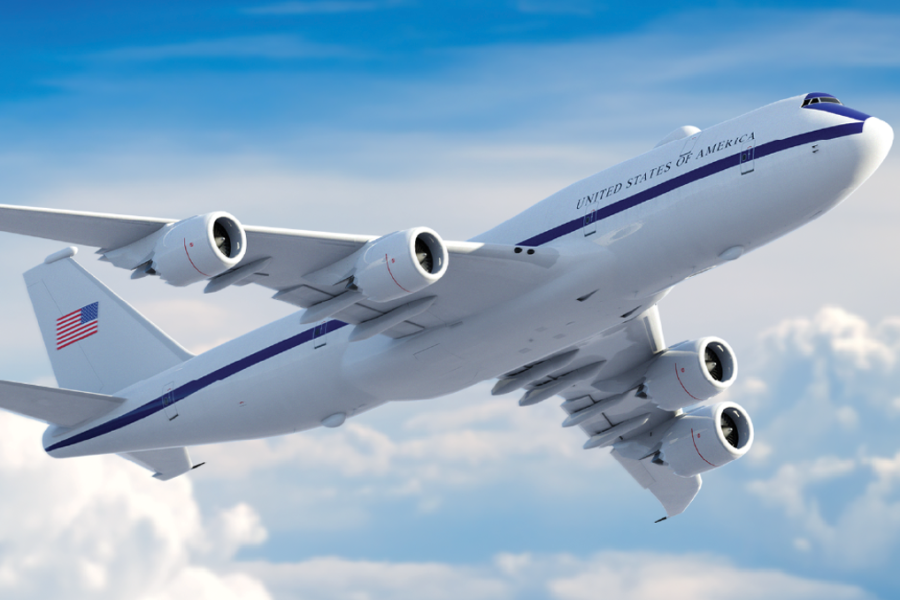Sierra Nevada Corporation, which received the $13 billion contract in April to build the Air Force’s Survivable Airborne Operations Center fleet, has secured five Korean Air 747-8 passenger jets to host the system.
Reuters first reported the aircraft sale, valued at about $674 million, which was concluded May 8.
The aircraft were built circa 2015 and will be about 15 years old when the first ones enter USAF service. The specific tail numbers have not been disclosed, but most of the late-model 747-8s owned by Korean Air have been parked for at least two of the last five years during the worldwide slowdown in air traffic associated with the COVID pandemic. The aircraft will be delivered to SNC by the third quarter of 2025. The fully operational SAOC aircraft are scheduled for delivery by 2036.
The E-4B National Airborne Operations Center (NAOC)—known as “Nightwatch” or the “Doomsday plane”—is USAF’s four-aircraft fleet of flying command posts, each of which can command and control U.S. nuclear and conventional forces. It dates to the late 1970s/early 1980s and suffers from parts obsolescence, deteriorating reliability, and “vanishing vendor” syndrome. An E-4B usually transports the Secretary of Defense and his staff on long trips, but in recent months, that mission has frequently shifted to other aircraft as the E-4B’s availability has declined. The most recently published data from the Air Force pegs the E-4B’s mission availability at just over 55 percent.

The Air Force has said it’s comfortable with using a “Commercial Derivative Aircraft” for the requirement, one that will be “hardened and modified to meet military requirements.”
The Nightwatch aircraft are heavily hardened against electromagnetic pulse and are structurally strengthened to keep flying if buffeted by a distant nuclear blast. The new aircraft will be similarly equipped and have redundant analog systems to ensure their continued operations in an EMP environment.
The amount of communications and other gear required for the mission necessitates a large, four-engined aircraft, but the two jumbo aircraft builders, Airbus and Boeing, have stopped building new A380 and 747 aircraft, respectively, that can contain the system, requiring SNC to buy secondhand aircraft.
Boeing, which is building the new “Air Force One,” bought 747-8s for that mission from a Russian charter company. Unlike the Korean Air jets, the ones that will serve as Air Force One never carried passenger traffic. There will be commonality between the SAOC jets and Air Force One.
It’s not clear if SNC will build five SAOC aircraft or replace the existing fleet of four Nightwatch jets on a one-for-one basis and use the fifth airplane for engineering mockup, fit and installation checks. The Air Force had said it might buy up to 10 Nightwatch jets. The company did not respond to queries.
SNC will do at least some of the conversion work at Dayton, Ohio, where it has a hangar sized to accommodate 747-8s.
The SAOC is required to be developed with an open systems architecture that will allow other companies to compete for future upgrades to its systems, and the Air Force will own the technical baseline for the system.
Service and industry officials said Boeing was ruled out of the SAOC competition late last year when it wouldn’t agree on data rights/intellectual property aspects of the contract or accept fixed-pricing on some aspects of the system. Boeing has in recent years lost more than $8 billion on the KC-46 tanker, MQ-25 Stingray carrier-based Navy tanker, and the Air Force T-7 Red Hawk trainer, all of which are fixed-price contracts.
The SAOC buy marks the second time the Air Force will have acquired secondhand passenger jets to fulfill a vital mission. In the 1990s, the service bought Boeing 707s that had served with Iran Air and converted them to become the E-8 Joint STARS fleet. Although high-time aircraft, the Air Force reasoned that the aircraft could be overhauled to “zero time.” In practice, the JSTARS fleet suffered from far greater structural fatigue and corrosion than other types. The 707 was chosen to achieve a degree of commonality with the KC-15, E-3 AWACS and RC-135 Rivet Joint fleets.
Air Force Gen. Charles Q. Brown, chairman of the joint chiefs of staff, told the Senate Appropriations Committee on May 8 that the SAOC is needed to ensure “we have a viable platform that we can sustain from a maintenance standpoint.”
“At some point,” Brown said, “it gets more costly to maintain than to move into a new capability.”
Brown said the SAOC will not merely be a fresher version of the Nightwatch, but will have “the most advanced capabilities that the nation has to offer.”
In its fiscal 2025 budget proposal, the Air Force asked Congress for $1.69 billion for SAOC development.
